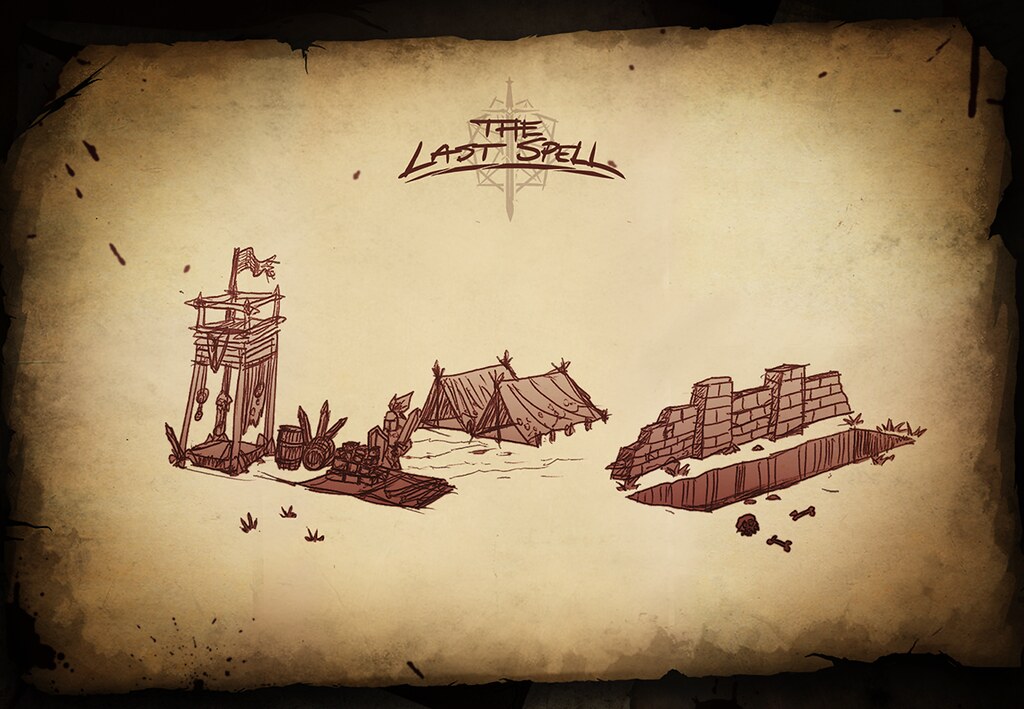Hello everyone, I am Matthieu Richez, CEO and Creative Director of Ishtar Games. I am extremely pleased to announce The Last Spell, our tactical roguelite game, will be available on PS5 and PS4 in early 2023!
But first, allow me to introduce you to the world of this dark, painful and gritty game we created…
A few years back, The Last Spell was just an idea I had in my head, which I gave to Jacques Dedeken, the Art Director: an asymmetrical tactical game with a few heroes fighting off hundreds of monsters. This resulted in this first ever concept art of the game:

Now in 2022 the game has been polished a lot, especially during our Early Access which started in 2021. With this amount of time, care and help of our players, we have been able to bring the best game to every user, with more maps, more ideas and more possibilities.
Tactical & roguelite
The Last Spell didn’t change much from the original idea given to Jacques: you have to defend your Haven with your Heroes against a lot of monsters. At day, you can patch up your Heroes, buy weapons and create buildings, but at Night, you will have to fight.
Each map has a different number of Nights and your only goal is to stay alive as long as you can. The longer your Heroes live and fight, the more you unlock new weapons, armors, passives and bonuses for your next run.
During the Night, we want you to feel overwhelmed by the monsters, to live on the edge at each moment of your run. This feeling is increased by the work of our Composer, Rémi Gallego (The Algorithm), who made an incredible metal soundtrack for The Last Spell.
The Last Spell being a tactical, each Hero has their own action points, movement and mana, which means you need to be careful with each move you aim to do. One mistake, and your Hero may be in immediate danger of death… And this is speaking from experience.
We took a lot of time to design the control scheme for The Last Spell because we’ve tried to find the best way possible to play the game with a PlayStation controller. For example, we’ve designed a system to help you navigate quickly in the interface by using the Right Stick. We also made sure the combat phase can be played quickly and smoothly. Another important point for us was to have a dedicated button to display tooltips, because it’s our main way to give players information about something.
One Last Spell to save the world
The world of The Last Spell is a hard and painful one. The magical war destroyed everything and only a few Havens are still standing up among the ruins. As if it wasn’t enough, a dangerous Mist arises every Night, bringing dreadful monsters to your walls.

Hopefully, you’ve got a way to save the world. Or well, humanity has one: casting The Last Spell, a powerful incantation to banish all magic